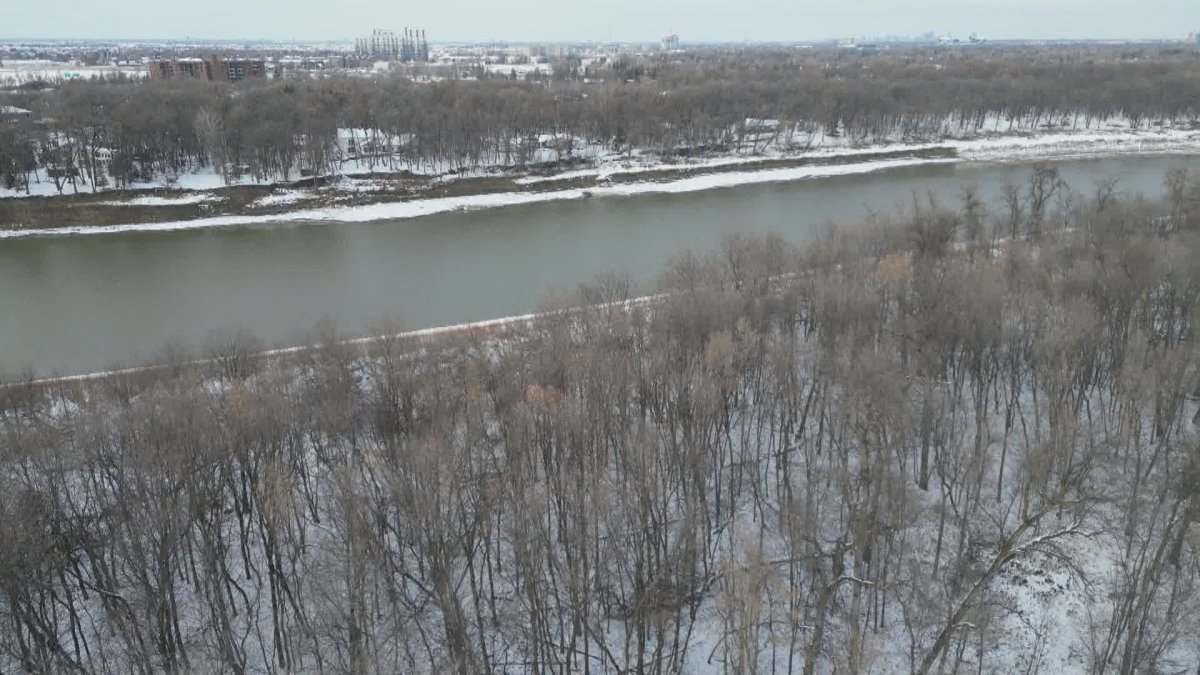Editor’s Note: A previous version of this story stated that the motion would move to council. The motion did not pass and, as such, will not move to council. Global News regrets this error.

In late 2023, Shelley Sweeney and Cat Macaulay-Gauthier took a walk together through the Lemay Forest in Winnipeg’s St. Norbert neighbourhood.
Sweeney represented Outdoor Urban Recreational Spaces (OURS) Winnipeg, and Macaulay-Gauthier is the co-founder of the Coalition to Save the Lemay Forest. The forest, owned by Tochal Developments, would be closed to the public just days later.
As they passed the Behavioural Health Foundation at the edge of the forest, Macaulay-Gauthier mentioned that it used to be an orphanage.
“As soon as I heard that, I figured that there was likely going to be a cemetery,” said Sweeney.
Sweeney, Archivist Emerita at the University of Manitoba, decided to look into the history of the Asile Ritchot. Opened as a home for unmarried mothers in 1904, it quickly surpassed the 30-40 children it had anticipated caring for. The Asile was run by the Soeurs de la Miséricorde, with help from some of the mothers, who would work to pay off their hospital fees.
In her research, Sweeney says she found records painting a grim picture of the conditions throughout the years.
Sweeney says overcrowding was an issue, and that many children died at the Asile.
“We have a report from 1909 in which one of the nuns or sisters had said that out of 314 children that had been accepted…188 had died,” she said, “which is a very high death rate. It’s almost 60 per cent.”
While the death rate did eventually go down, the Asile was still overwhelmed.
“As far as we know, somewhere between 1,288 and over 2,000 children died at the Asile in the 44 years,” Sweeney said.
Sweeney found a map that indicates a cemetery in the northeast corner of the Lemay Forest. Sweeney went to inspect the area herself, and found a clear area surrounded by mature trees.
“The trees actually are an integral part of telling us where the cemetery was,” she said. “You see these sort of sentinels kind of guarding the cemetery.”
Though there’s some suggestions the cemetery was moved in the 1950s, Sweeney says there’s no documentation that shows exactly to where or when this occurred.
“Say that not all of those children ended up in that cemetery, but let’s say even 500, 900 children. I find it hard to believe that they could have moved all of the bodies,” she said.
Sweeney says it’s likely many of the children at the Asile were of Métis descent.
“It’s a very sad part of our history, but it’s important that we know about it,” she said, adding she thinks the community should be consulted on how to best commemorate those who were buried there.
“Having found out all this information about it, I just can’t, you know, morally or ethically, just let it go.”
Sweeney presented information on the cemetery at Thursday’s Standing Policy Committee on Property and Development meeting in regards to a motion for the City of Winnipeg to negotiate a purchase price for the forest from Tochal Developments. She and other advocates, including Macaulay-Gauthier, spoke in favour of saving the Lemay Forest.
The motion did not pass and will not be presented to city council.






Comments